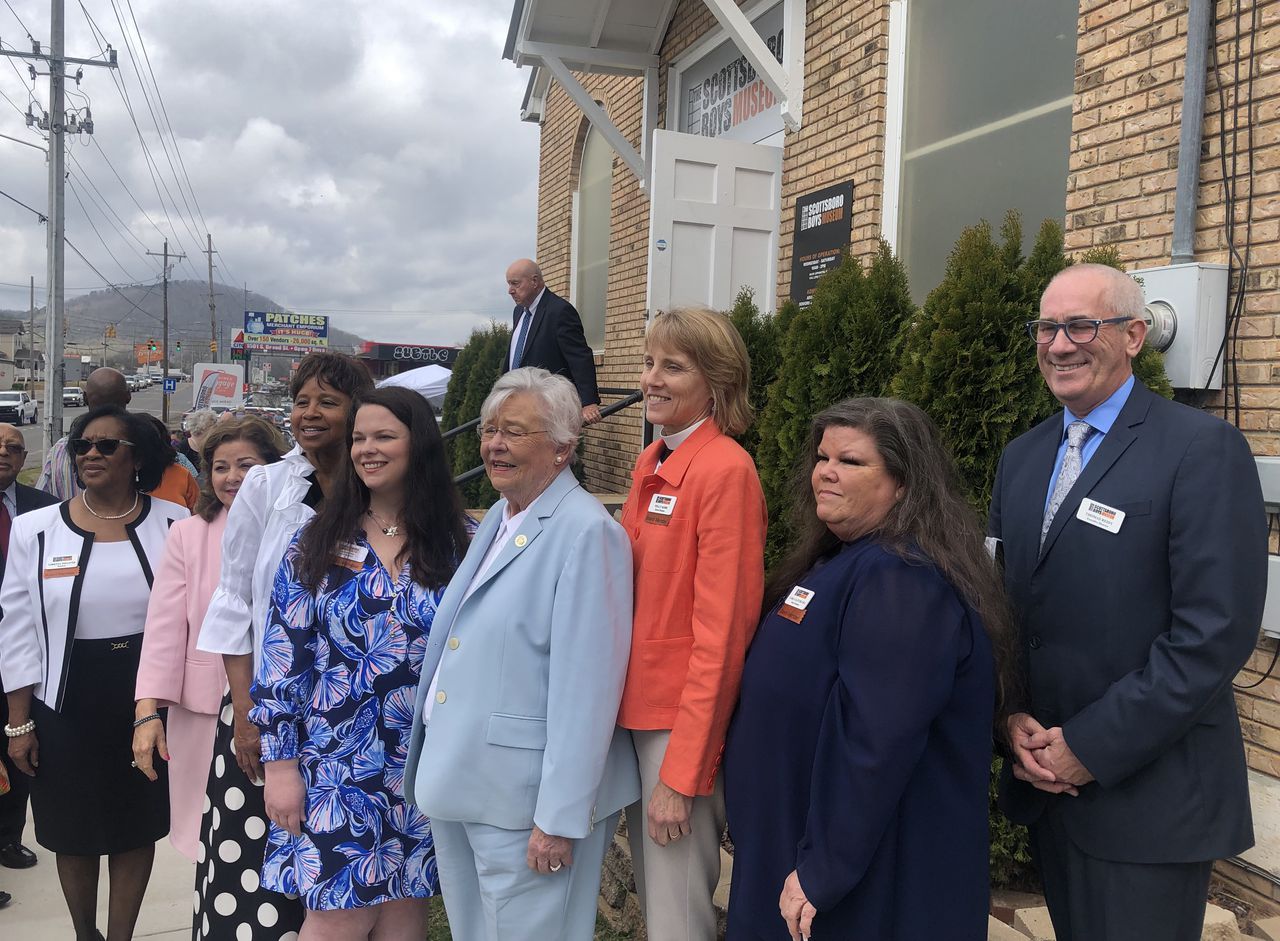Gov. Kay Ivey on Scottsboro Boys: ‘We will never forget’
A children’s choir sang and a crowd so large squeezed into the museum that it would have left a fire marshal hyperventilating.
This commemoration Friday at the Scottsboro Boys Museum in downtown Scottsboro marked an occasion to remember past injustices and serve as a reminder that the future can be a better place.
Related: Historic day: Scottsboro Boys, 9 black young men convicted of 1931 rape of 2 white women, exonerated
“We want you to be nice to people,” said Thomas Reidy, the museum’s executive director. “It becomes about action.”
Such a simplistic reminder underscores the legacy of the Scottsboro Boys – nine Black teenage boys wrongly accused, and convicted, of raping two white women in 1931. They were posthumously exonerated and eight were pardoned in 2013 by former Gov. Robert Bentley. The ninth, Clarence Norris Sr., was pardoned in 1976 while he was still alive by former Gov. George Wallace.
And on Friday, another governor came to north Alabama to acknowledge the legacy of the Scottsboro Boys: Norris, Ozie Powell, Charlie Weems, Willie Roberson, Haywood Patterson, Andy Wright, Roy Wright and Eugene Williams.
Gov. Kay Ivey said each of their names, remarking that “sadly, they “did not live long enough to see their pardon.”
The Scottsboro Boys, some strangers to each other but forever linked by the unjust charges and convictions, boarded a Memphis-bound train in Chattanooga but made it only as far as Paint Rock in Jackson County. They were pulled from the train, taken to jail in Scottsboro and eventually convicted by an all-white jury.
One of their accusers eventually recanted her accusation of rape.
Their convictions were eventually overturned by the U.S. Supreme Court.
Still, “Their lives were ruined,” state Sen. Steve Livingston, R-Scottsboro, said. “Their reputations destroyed.”
Ivey spoke inside the Scottsboro Boys Museum, formerly the Joyce Chapel United Methodist Church – the oldest surviving African American church in Jackson County. On the front row was Clarence Norris Jr., whose father was one of the Scottsboro Boys.
“It reminds me of another historic house of worship and an icon of the Civil Rights movement, the world-famous Dexter Avenue Baptist Church in downtown Montgomery,” Ivey said. “Within eyesight of the front steps of the State Capitol building, that unique church helped launch the national struggle for Civil Rights, born from the words and passion of Reverend Dr. Martin Luther King, Jr.
“The former Joyce Chapel United Methodist Church in which we are gathered today has played a similar role in bringing closure to nine victims of a miscarriage of justice nearly a century ago.”
Reidy spoke about the value of the museum, the lessons it teaches and the perspective to be gained.
“When we get visitors, we ask them as they walk through the front door, please imagine what it would be like to be a black teenager in 1931 in the South,” he said. “Think about the obstacles you would face. Think about the opportunities, if there were any think about what it looked like. And when you do that, you can understand the story better.”
And Livingston said, “This museum will help ensure that all future generations can remember that story. This is the first stop on the Civil Rights trail. And we’re proud to have it in Scottsboro.”
The governor noted that the Scottsboro Boys spent a combined 102 years in prison due to their convictions.
“I agree with the words of former state Rep. John Robinson, who passed away just one week ago, ‘Time does not heal everything. That’s why it’s so important to exonerate the Scottsboro Boys,’” Ivey said. “On the 92nd anniversary of the arrest of the Scottsboro Boys, I am honored to join in this solemn occasion, as we symbolically follow museum founder Sheila Washington’s pledge to “to burn a candle in memory” of the Scottsboro Boys.
“We will never forget their stories and their legacy.”
